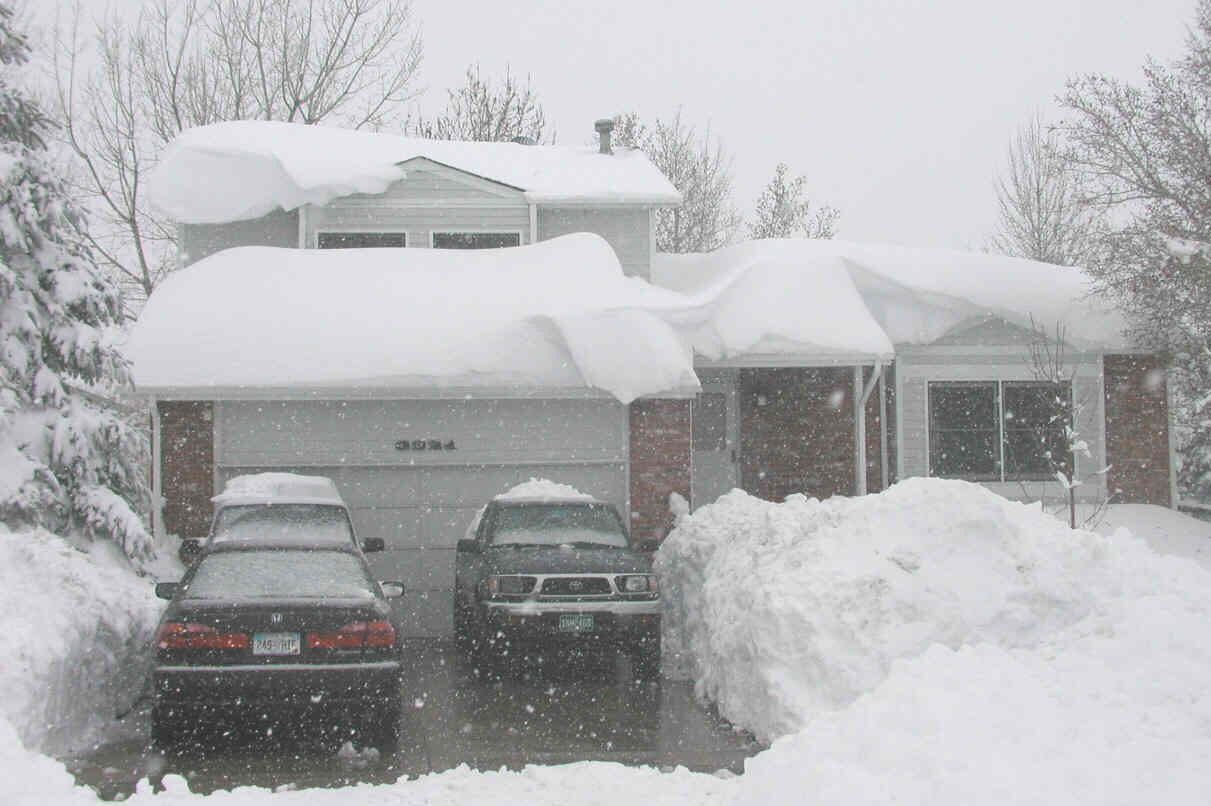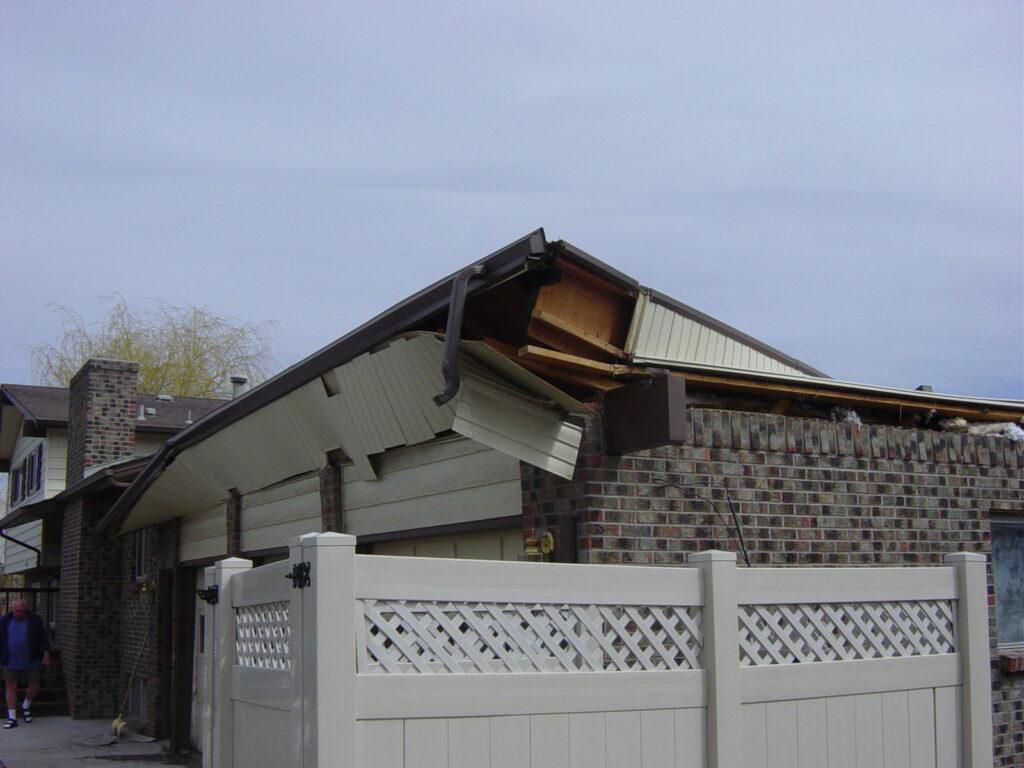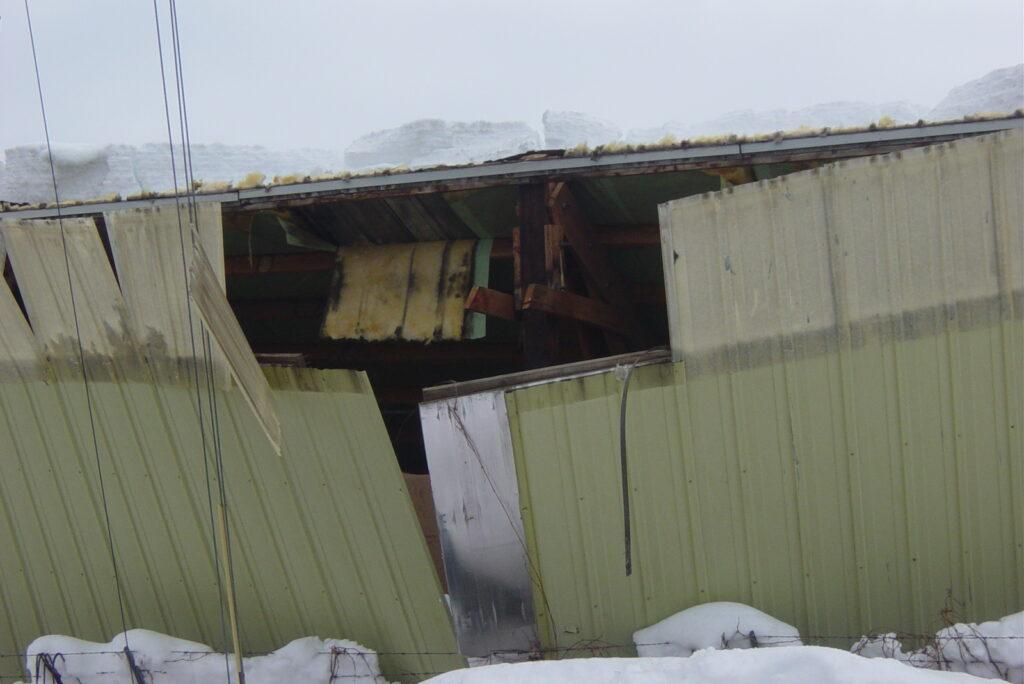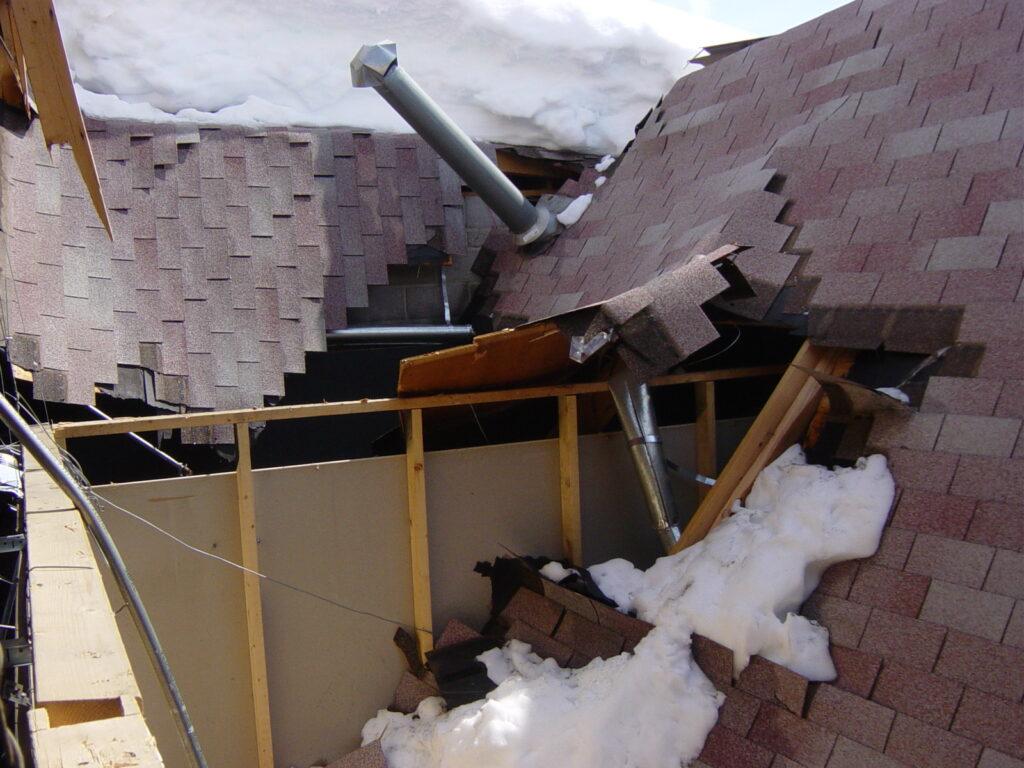
It’s on everyone’s mind right now. A forecasted winter storm has already brought some fretting and could bring multiple feet of snow to parts of Colorado over the weekend. When something similar happened in March of 2003, roofs collapsed under the weight of all that precipitation.
Not to worry you, while it’s possible that it could happen to you, it’s unlikely. A bowed roof is more plausible.
We asked self-described “building code geek” Steve Thomas, of Parker, if he’s worried. Officially, he is the Colorado Regional Manager and Director of Education at Shums Coda Associates. He’s also the author of “Building Code Basics” and “Building Code Essentials” — so, yeah, this was a well aimed question. Thomas remembers that 2003 storm well and shared photos with us.
Do building codes say something about snow loads on roofs?
“In the Denver area, [the code] is generally 40 pounds per square foot of snow. That’s a lot of snow. The storm we had in 2003 was about 30 inches of snow and it was pretty darn close to 30 pounds per square foot. And we did have some building failures across the metro area. So if we get a big storm, a foot or two, I’m not concerned. We start getting three feet, I might be a little concerned, but there’s generally enough safety factor designed into buildings that it most likely will support more than that.”
Can a roof bend, but not break? Sorta cartoonish-sounding, but...
“We have deflection, which is designed in. When you drive across a bridge, for example, and the bridge bounces when a truck goes by, that's deflection. So the member actually bows and we actually design that into the, the rafter, the beam or whatever holding the structure up. So it will do that under full load. And then what happens is if it goes past that, it may not fail and collapse, but it may not come back up. Now you've got to probably replace those members. And we saw a lot of that in 2003, where we didn't actually have a collapse. We just had deflection past what it was and we had to go in and replace some roofs for that.”
Do codes differ in the mountains?
“Their snow loads [codes] could be upwards of 70 pounds. I’ve even seen a hundred pounds per square foot because they get more snow obviously. Metal roofs are really good in snow country. If you go up to the mountains, you see a lot of buildings with metal roofs, right? And that’s because the snow tends to slide off a lot easier.”
Older homes aren’t necessarily more vulnerable than newer ones, right?
“If you've got a home that's built in the early 1900's, that lumber is much bigger and much stronger than it is today. Those buildings were built when 2x4s were really two inches by 4 inches. A 2x4 today is only an inch and a half by three and a half inches. And because of the rapid growth that we're seeing with the trees, we're seeing that lumber is getting weaker. So in an older home, I don't think I'd be too worried about it.”
What about snowmelt devices on the roof?
“A lot of people put heat tape up there and help melt the snow. I'm not a big fan of that because you've got electric outside that can be damaged and now it can be a fire hazard. But that is an option.”










